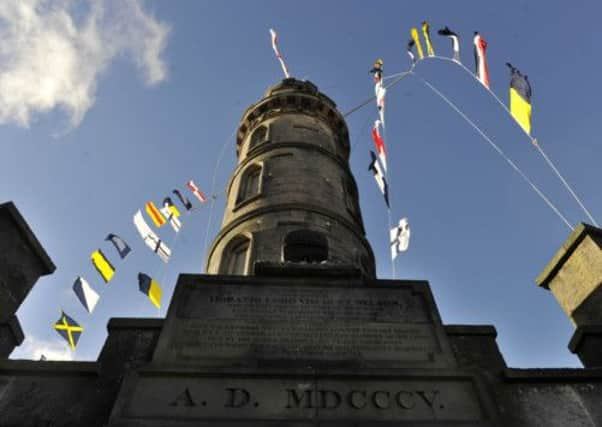Scottish fact of the week: Nelson Monument flags


The Battle of Trafalgar in 1805 was one of the most important of the Napoleonic Wars. The British navy, led by Lord Nelson, took on the boats of Spain and France at Cape Trafalgar off southwest Spain.
Although Britain decisively won the battle, the charismatic Nelson died and 1,700 British seamen - up to 20% of whom were Scottish - were killed or wounded. The youngest of those to die at Trafalgar was a ten-year-old boy from Leith, John Doig.
Advertisement
Hide AdJust a month after the battle, a meeting in Edinburgh saw the planning begin for a monument to Nelson and a fund for wounded soldiers. Ground was struck on Edinburgh’s monument to Nelson in 1807, with construction finally completed nine years later.
The 106-foot tall monument features a viewing platform at its summit, in a perfect vantage point for signalling to the water below.
Every year on 21 October flags are hung from the Nelson Monument to spell out Nelson’s famous rallying call from the battle - “England expects that every man will do his duty”.
Those flags were seen again this week on the battle’s 208th anniversary, reminding Edinburgh citizens of the sacrifices made by British sailors two centuries ago, as well as surprising passers-by on their way through the capital city.